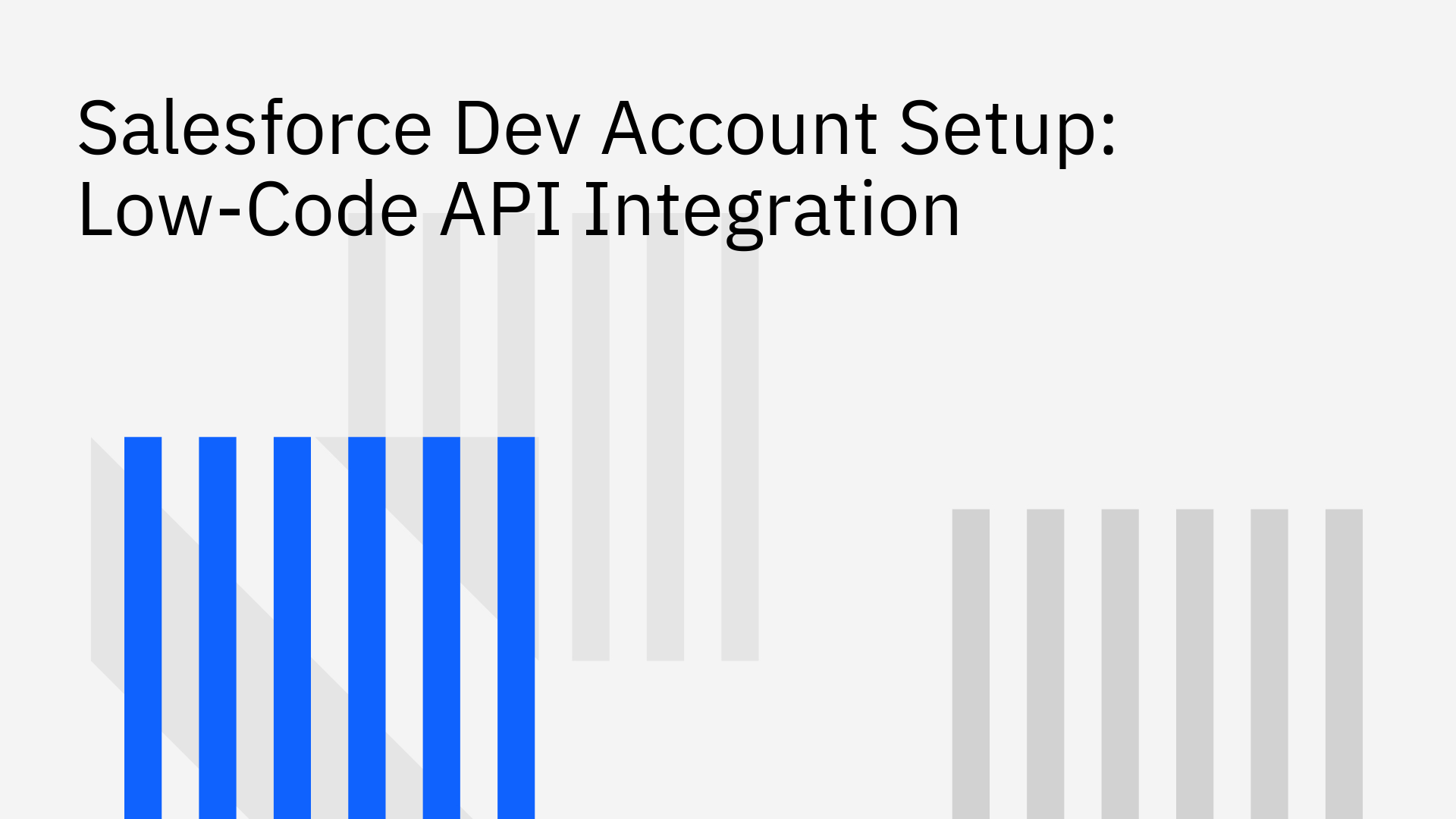
A Salesforce Developer account is essential for any team looking to build and test integrations in a safe, sandboxed environment. Before connecting Salesforce to your databases or other business-critical applications, you need a place to experiment without risk.
This is where low-code API integration shines, offering a way to connect systems with impressive speed and simplicity, empowering your team without needing months of custom coding.
This article provides a clear, step-by-step guide on how to complete your salesforce developer account setup. This free, permanent account is the first step toward building powerful, low-code data synchronization workflows. For a full overview of how this fits into your integration strategy, explore The Complete Salesforce Signup Guide for Integration-Focused Organizations.
A Salesforce Developer account, also known as a Developer Edition or Dev Org, is a free, fully-featured environment designed for developers and administrators [1]. It provides a complete instance of the Salesforce platform where you can build custom applications, learn new features, and experiment with APIs without affecting your company's live production organization. It’s an isolated and safe playground for innovation. While it's a lifetime account, it does come with limitations, such as a 200MB data storage cap, making it ideal for development and testing rather than for hosting large datasets [1].
A dev account is the perfect place to test low-code API integrations. Attempting to build connections directly in your live production environment is risky and can lead to data errors or system downtime. The Developer Edition eliminates that risk entirely.
Key benefits include:
Creating your account is a straightforward process that takes only a few minutes. This section will walk you through each step with clear instructions so you can get your environment up and running quickly.
First, go to the official Salesforce developer signup page to get started with the latest Developer Edition, which includes powerful tools like Agentforce and Data Cloud [3].
you@company.dev). This username must be unique across all Salesforce instances, so you may need to be creative.After you submit the form, Salesforce will send a verification email to the address you provided.
Once your password is set, you will be automatically logged into your new Salesforce developer instance. The URL will look something like yourcompany-dev-ed.develop.lightning.force.com. We recommend bookmarking this URL for easy access in the future.
Your developer org is now ready to use. For a more detailed walkthrough of navigating the interface for the first time, you can follow our guide to Create a Salesforce Developer instance (free forever).
Low-code platforms are tools that enable users to build applications and integrations with minimal hand-coding. Instead of writing code from scratch, you use visual interfaces and pre-built components to create powerful software solutions [4].
This approach dramatically speeds up development and allows business users to participate in building the solutions they need. The key tradeoff is that while you gain speed, you trade some of the granular control offered by pure code, making it crucial to choose a platform that is flexible enough for your specific use cases.
Low-code platforms are a game-changer for connecting Salesforce with other critical business systems like databases (Postgres, MySQL), ERPs (NetSuite, SAP), and other SaaS apps. Instead of dedicating engineering resources to building and maintaining brittle, custom-coded APIs, you can use a low-code solution to accomplish the task in hours. This results in a faster time-to-market, reduced reliance on overstretched developer teams, and significant gains in operational efficiency. As organizations look to streamline processes, many are turning to the top low-code integration platforms for 2025 operations.
Now that you have a Salesforce developer account, you can immediately put it to use by creating your first low-code integration. Stacksync is a powerful low-code platform designed for real-time, two-way data synchronization, helping you connect systems without the traditional headaches of API management.
Key features that simplify Salesforce integration include:
With your new dev account, you can use Stacksync to create a seamless, bidirectional sync between Salesforce and a database. To see just how easy it is, check out our guide on how to set up a two-way sync between Salesforce and Postgres.
Setting up a Salesforce developer account is a quick, free, and essential first step for any integration project. It gives you a safe and robust environment to explore the power of low-code API integration without putting your live data at risk.
Now that you have your account, don't stop there. Take the next step by connecting it to your other systems with a modern, low-code integration solution. Platforms like Stacksync make it possible to build powerful, reliable data syncs in minutes, not months, freeing your engineering team to focus on building a competitive advantage.
Ready to see it in action? Learn how a Dev Org Made Easy: Salesforce Account with Instant Two Way Sync can transform your operations.